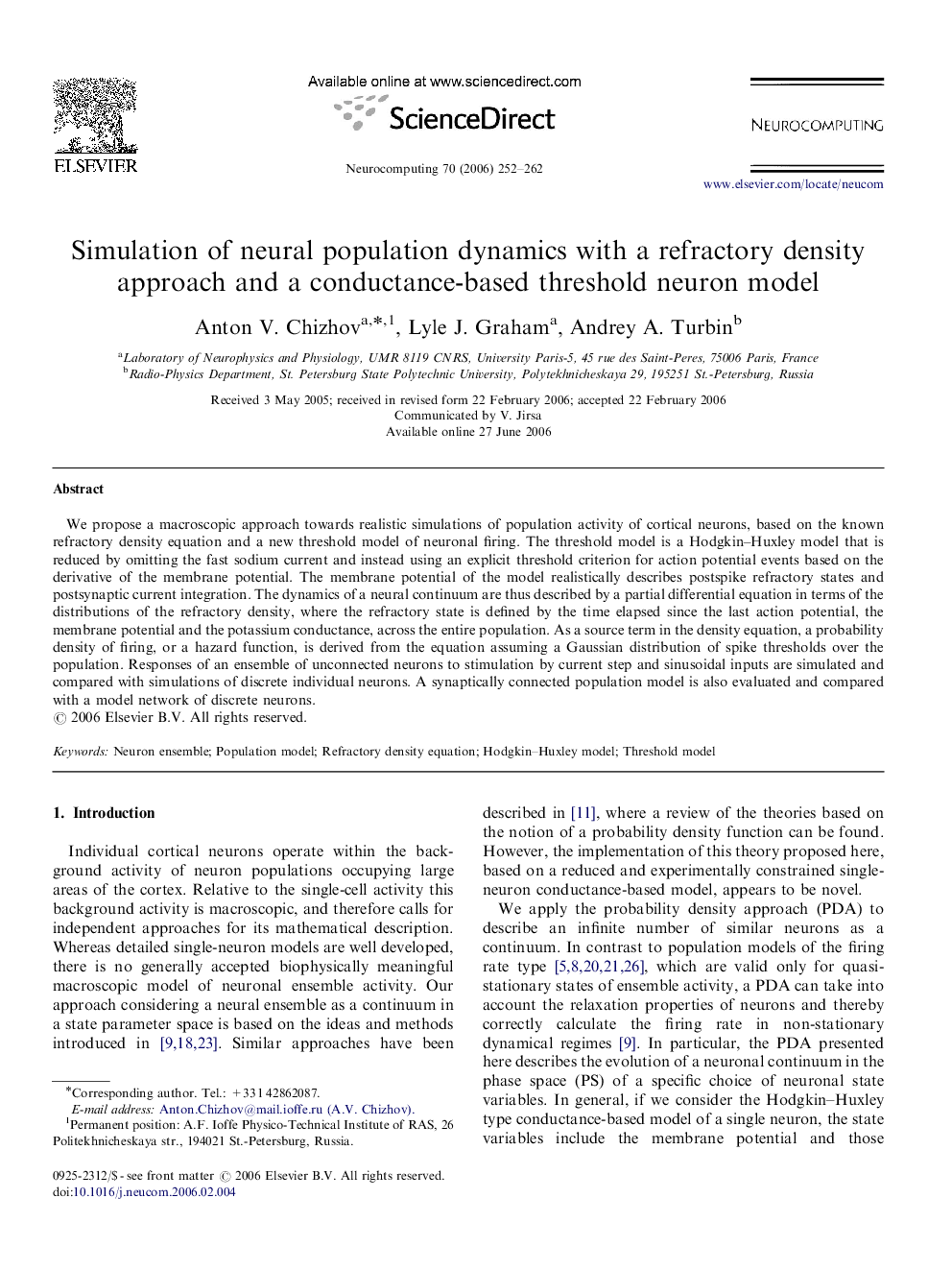| Article ID | Journal | Published Year | Pages | File Type |
|---|---|---|---|---|
| 410900 | Neurocomputing | 2006 | 11 Pages |
We propose a macroscopic approach towards realistic simulations of population activity of cortical neurons, based on the known refractory density equation and a new threshold model of neuronal firing. The threshold model is a Hodgkin–Huxley model that is reduced by omitting the fast sodium current and instead using an explicit threshold criterion for action potential events based on the derivative of the membrane potential. The membrane potential of the model realistically describes postspike refractory states and postsynaptic current integration. The dynamics of a neural continuum are thus described by a partial differential equation in terms of the distributions of the refractory density, where the refractory state is defined by the time elapsed since the last action potential, the membrane potential and the potassium conductance, across the entire population. As a source term in the density equation, a probability density of firing, or a hazard function, is derived from the equation assuming a Gaussian distribution of spike thresholds over the population. Responses of an ensemble of unconnected neurons to stimulation by current step and sinusoidal inputs are simulated and compared with simulations of discrete individual neurons. A synaptically connected population model is also evaluated and compared with a model network of discrete neurons.
